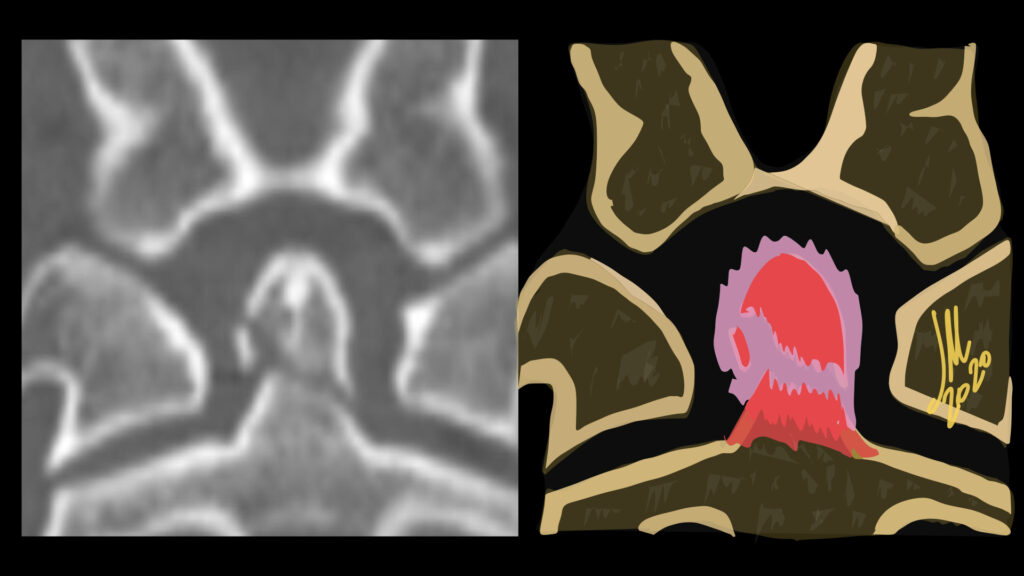
Fracture through the base of the dens. Type II odontoid fractures are potentially unstable with subsequent myelopathy and spinal injury risk. Higher risk of nonunion with comminuted fracture, age > 50 or more than 5 mm displacement.
Odontoid fracture is a very common cervical injury, accounting approximately for 9%–15% of all cervical fractures. These injuries result from an hyperextension or hyperflexion mechanism of the cervical spine in low-energy impacts such as falls for elderly patients or in high-energy impacts such as motor vehicles accidents for young people.
The classification scheme of odontoid fractures described by Anderson and D’Alonzo is the one most commonly used. However there is a new classification by Grauer who proposed a better difference between type 2 -3.
Cervical spine trauma is most commonly evaluated with CT with MPR reconstructions 1-3mm.